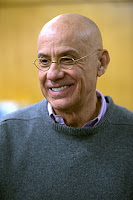“Oh, you’re being such a snob!”
I am a snob, but I always hate it when people catch me at it.
The judgment came from my friend, Jean Griffith, who had just announced to me that she read only mysteries. I sniffed a bit and allowed as how I never read them.
“Well, try this,” she said, brandishing a copy of Cover Her Face by P.D. James as if it was a sword.
Jean and I lived at Coles House, then a residence for young ladies in Center City Philadelphia, so I returned to my tiny room and read most of the night. It changed my life (and I still remember whodunnit). Though I had studied and learned to revere contemporary fiction, I couldn’t deny the pull of a book that boasted a beginning, a middle and an end. The characters were well drawn and actually did things (like kill people); they didn’t just sit around displaying their exquisite sensibilities.
So I became quite the little mystery addict. My substance of choice was cheap (when I started reading mysteries they were a mere $2.50) and Jean, like any good supplier, was full of sage advice (“Try Ngaio Marsh. The books are only $2.25 and the print is REALLY small!”)
Jean and I went to the 1989 Bouchercon. James Ellroy signed my copy of The Big Nowhere (“Stephanie—To the wooooo of your sensuality”), kissed my hand and suggested we might spend the afternoon discussing his books. Alas, the 150 people behind me in the book signing line had other ideas.
While that was a cheap thrill, it was not nearly as important as my introduction to Robin Hathaway. (Jean worked with Bob, Robin’s husband). Robin was not yet published and was at Bouchercon to learn from those who were. On the last day of the conference Jean and I came home with Robin and feasted on cheese, crackers and wine which if you are having them with good friends constitute life’s most perfect meal.
Unfortunately, Jean died in 1997 around the time that Robin was published. Robin and I subsequently became frequent mystery conference roomies going to many Bouchercons and Malice Domestics. (or is that Malices Domestic?)
Somewhere along the way Robin and I discovered that we liked a lot of the noir writers. I still remember the first time I read Cornell Woolrich’s Waltz into Darkness. It made me feel cheap and dirty. I couldn’t wait to feel that way again. Then Robin discovered Noircon, a mystery conference designed to honor David Goodis and other noir writers. Who knew that moral turpitude and depravity could be hilarious? I still remember the early Friday morning panel on erotic elements in noir novels. There was a lively discussion of bestiality with the exchanges like this:
“What’s the big deal about bestiality?”
“The animal can’t consent.”
Robin wrote furiously and pushed a piece of paper in front of me.
I looked down. “They don’t have these kinds of discussions at Malice,” she had written.
Yes, I really miss Robin and am delighted to have a spot on this blog.
I am a snob, but I always hate it when people catch me at it.
The judgment came from my friend, Jean Griffith, who had just announced to me that she read only mysteries. I sniffed a bit and allowed as how I never read them.
“Well, try this,” she said, brandishing a copy of Cover Her Face by P.D. James as if it was a sword.
 |
| Coles House |
So I became quite the little mystery addict. My substance of choice was cheap (when I started reading mysteries they were a mere $2.50) and Jean, like any good supplier, was full of sage advice (“Try Ngaio Marsh. The books are only $2.25 and the print is REALLY small!”)
 |
| James Ellroy |
While that was a cheap thrill, it was not nearly as important as my introduction to Robin Hathaway. (Jean worked with Bob, Robin’s husband). Robin was not yet published and was at Bouchercon to learn from those who were. On the last day of the conference Jean and I came home with Robin and feasted on cheese, crackers and wine which if you are having them with good friends constitute life’s most perfect meal.
Unfortunately, Jean died in 1997 around the time that Robin was published. Robin and I subsequently became frequent mystery conference roomies going to many Bouchercons and Malice Domestics. (or is that Malices Domestic?)
Somewhere along the way Robin and I discovered that we liked a lot of the noir writers. I still remember the first time I read Cornell Woolrich’s Waltz into Darkness. It made me feel cheap and dirty. I couldn’t wait to feel that way again. Then Robin discovered Noircon, a mystery conference designed to honor David Goodis and other noir writers. Who knew that moral turpitude and depravity could be hilarious? I still remember the early Friday morning panel on erotic elements in noir novels. There was a lively discussion of bestiality with the exchanges like this:
“What’s the big deal about bestiality?”
“The animal can’t consent.”
Robin wrote furiously and pushed a piece of paper in front of me.
I looked down. “They don’t have these kinds of discussions at Malice,” she had written.
Yes, I really miss Robin and am delighted to have a spot on this blog.





.JPG)




































